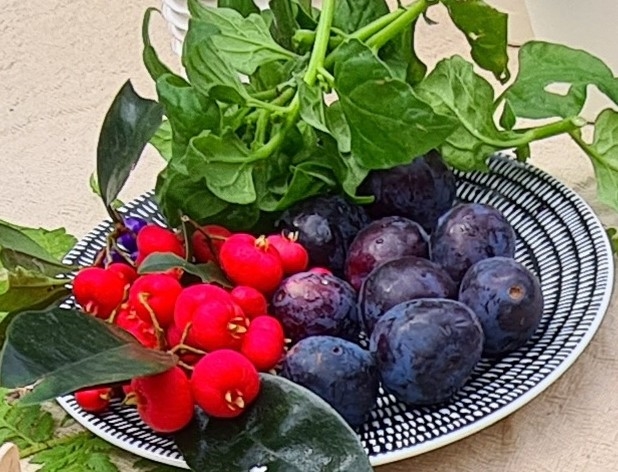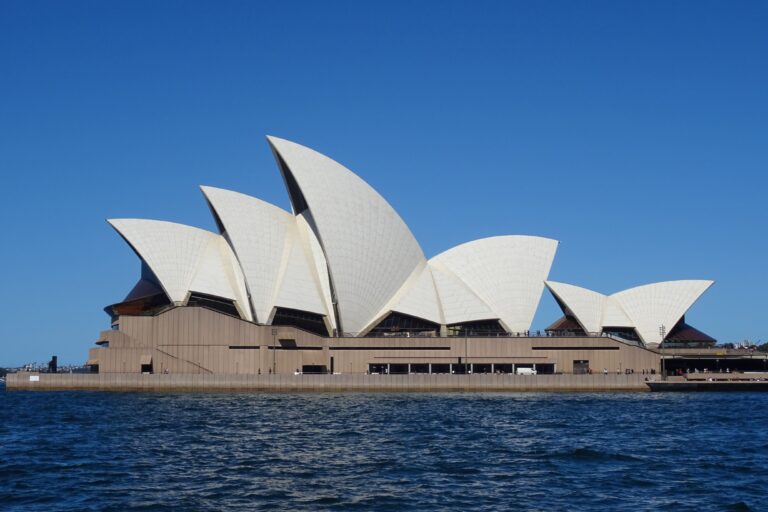By Neena Bhandari
Imphal (India), 21.04.2009 (The Hindu Businessline): While Manipur simmers with unrest, memories of a once serene State come flashing to mind. As the aircraft takes off leaving behind the hustle and bustle of Dum Dum, the Manipuri air-hostess greets us with a polite `namaste’. Flying across Bangladesh in this Calcutta-Imphal flight, an uncertain delight engulfs me for North-East has always held a special fascination for me.
After a few hours and a stopover at Silchar, where passengers who board the flight remind one of bus commuters, some even carrying sacks of potatoes, we touch the rain-washed airfield of Imphal.
As we drive through the arterial roads of this capital city, women clad in phanek (skirt) and inafi (dupatta) and men in khodai (dhoti) and shirt portrayed the traditional Indian more than anybody else.
Imphal, derived from the word, `Yumpham’ meaning `homestead’, was founded in the first century A.D. This `Land of Jewels’, as it is called, shares an international frontier with Burma and spans across 22,000 sq km. The region mostly comprises of wooded hills adorned with blooming orchids of various hues and shades.
Bicycles and rickshaws surpass the number of cars. There are still many more who choose to walk. As the traffic lights turn red, two speeding cars slam into each other. The two drivers alight, but there are no heated exchanges. They settle the terms and depart after shaking hands. Manipur of today has probably changed considerably and western attire and imported cars have made their inroads, but what had struck me then was the passive cool of the people.
The calm of the city affects you as much as the solemn shades of white and peach of their attire and the long sandal-paste tilak drawn from the forehead to the nose, quite different from the vibrant colours womenfolk of the Thar desert wear. Pure gold jewellery, as elsewhere in India, is a priced possession of almost every woman here with artificial jewellery yet to catch her fancy.
Though ethnically all Manipuris are Mongolians, they have segregated into three castes — the Meitis, who are chiefly Hindus and inhabit the fertile plains, the Kukios or tribals of the South-East and South-West hills and the Nagas living in the East, North and North-West hills of the State.
Women in this Far-East State are more progressive than men in trade and business. The Khwairamband bazaar, which is perhaps the largest women’s market in the country, is a living testimony to it. Located at the epicentre of the town, it accommodates women of all ages in its open `Cadbury cabins’, which have been owned by the same family for generations. From perishable vegetables to everlasting intricately woven handlooms and handicrafts, it offers all. If you are looking for the `imported goods’ and can bargain with these adamant sellers you can strike a good deal.
Following in the tradition of the West, they uphold dignity of labour. It is no surprise to find senior Government officials’ wives selling `paan’ or potatoes in a lacy sham (traditional basket) hung on the head. “The driver dining with the `saheb’ is very much part of our culture, but the `mayangs’ or outsiders as they are called in the local dialect are polluting our culture by imposing the feudalistic ways,” opines an aged lawyer. “Theft and robbery are uncommon but,” a student adds, “with people in power amassing large fortunes this classless society is fast turning into one with class distinctions.”
As one moves to the outskirts, the eerie silence of the war symmetries unknowingly draws one’s attention. The mind turns through the annals of history, every leaf unfolding the misery and devastation humanity suffered during the Second World War. Inscriptions like `To John, from Mary and the baby he never saw — November 13, 1939′, are a touching sight. The flowers in full bloom bestowing their rich tributes are a spectacle unseen in the rest of the country except Nagaland.
A little further away, the fragrance of the Khonghampat orchid yard beckons you to the kaleidoscopic landscape, undulating blue hills with lush undergrowth of exotic species of orchids. Come May, and the 110 species are at the peak of their glory, but the most captivating is the blushing pink Siroi Lily.
Driving through the historic highway, which was once witness to the bloodbath between the British and Japanese forces, one reaches Moirang. The place, which played the headquarters of the Indian National Army for a short spell during World War II and came on the international map on April 12, 1944 when the Indian tricolour was first hoisted here.
It is also the seat of Laiharoba, a traditional Manipuri dance, based on the folklore of Khamba and Thoibi’s incessant love for each other.
I was fortunate to participate in Moirang’s annual cultural fest. Unlike the rock n’ roll and high octaves, the strains of their music are soft and tender to keep in pace with the slow fragile steps of their traditional dances.
Manipuris being god-fearing, all their festivities begin with offering prayers. Significant in itself is the Raslila depicting Radha’s altruistic love for Krishna. Ardent worshippers of Radha-Krishna, they are as much an integral part of every home as the spinning and weaving loom. Thangjing, the temple of the forest gods, still has a collection of clothes belonging to the 12th-century Moirang kings.
Moving away from this treasure-house of culture and war memorials, appear the Keibul-Lamjao wildlife sanctuary, the only floating sanctuary of its kind. The natural habitat of the brow-antlered deer and also home to the wild boar and panther, these floating marshes in the Loktak lake move according to the whims of the wind. A bird’s eye view of it from the Babet Ching observatory tower is a remarkable sight even if you have failed to spot the deer.
Away from the sanctuary, emerges a mass of lighted huts floating on these tiny islets of shrimps, swamps and marshes in the Loktak lake like the Milky Way in the sky. Called `phoom’, many a fishermen living on these islets have drawn a fishing line along the grassy margin dotted with bright-hued water plants such as the water hyacinth.
These fishermen, oblivious to the surroundings, have formed a world of their own on the islets. Thriving on red rice, weeds and fish, there is little they know of five-star luxury or cuisine, but are a happy lot singing with full-throated ease as dusk gives way to night.
Despite the lack of adequate facilities, of fewer modes of communications and of being on the frontier, Manipur offers a promising dawn for tourists and tourism!
Let’s hope the tranquility and peace returns to the State soon.
Fact File
How to get there
By air: Indian Airlines flights connect Imphal with Delhi via Guwahati and with Calcutta via Agartala and Silchar.
By rail: The nearest railhead is Dimapur, 215 km away.
By road: Motorable roads connect Imphal with Agartala (465 km), Aizwal (374) km, Dimapur (216 km), Guwahati (579 km) and Itanagar (413 km), Kaziranga (346 km), Kohima (123 km), and Shillong (643 km). State transport buses and luxury private buses ply on all these routes.
Accommodation: A few budget hotels open their doors to visitors and prior reservations are not generally required. Hotel Imphal run by the Tourism Department offers A/C and Non-A/C rooms with modern facilities. Tel: (0385) 220459/ 223250, 223723 /224354. Fax 0385 – 224354, 221561. Best Season: October to February.
For tourist information one could contact the Government of India Tourist Office, Jail Road, Imphal- 795001. Tel: 221131; Tourism Information Centre, Directorate of Tourism, Manipur.
© Copyright Neena Bhandari. All rights reserved. Republication, copying or using information from neenabhandari.com content is expressly prohibited without the permission of the writer and the media outlet syndicating or publishing the article.




Wonderful experience as described in your story. Now things are changing and infrastructure has been created. Improved road connection and many more flights from across the country, especially from Guwahati. One of best hotel chains – Classic Group of Hotels Imphal – has accommodation ranging up to 4 Star. There are about 45 homestays in and around Loktak and some floatels. The locals depend on tourism for income. There are strict regulations imposed by the Loktak Development Authority, particularly to keep the lake free of pollution.